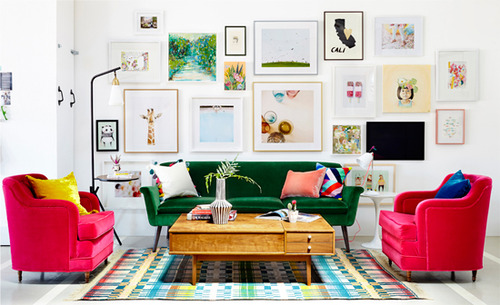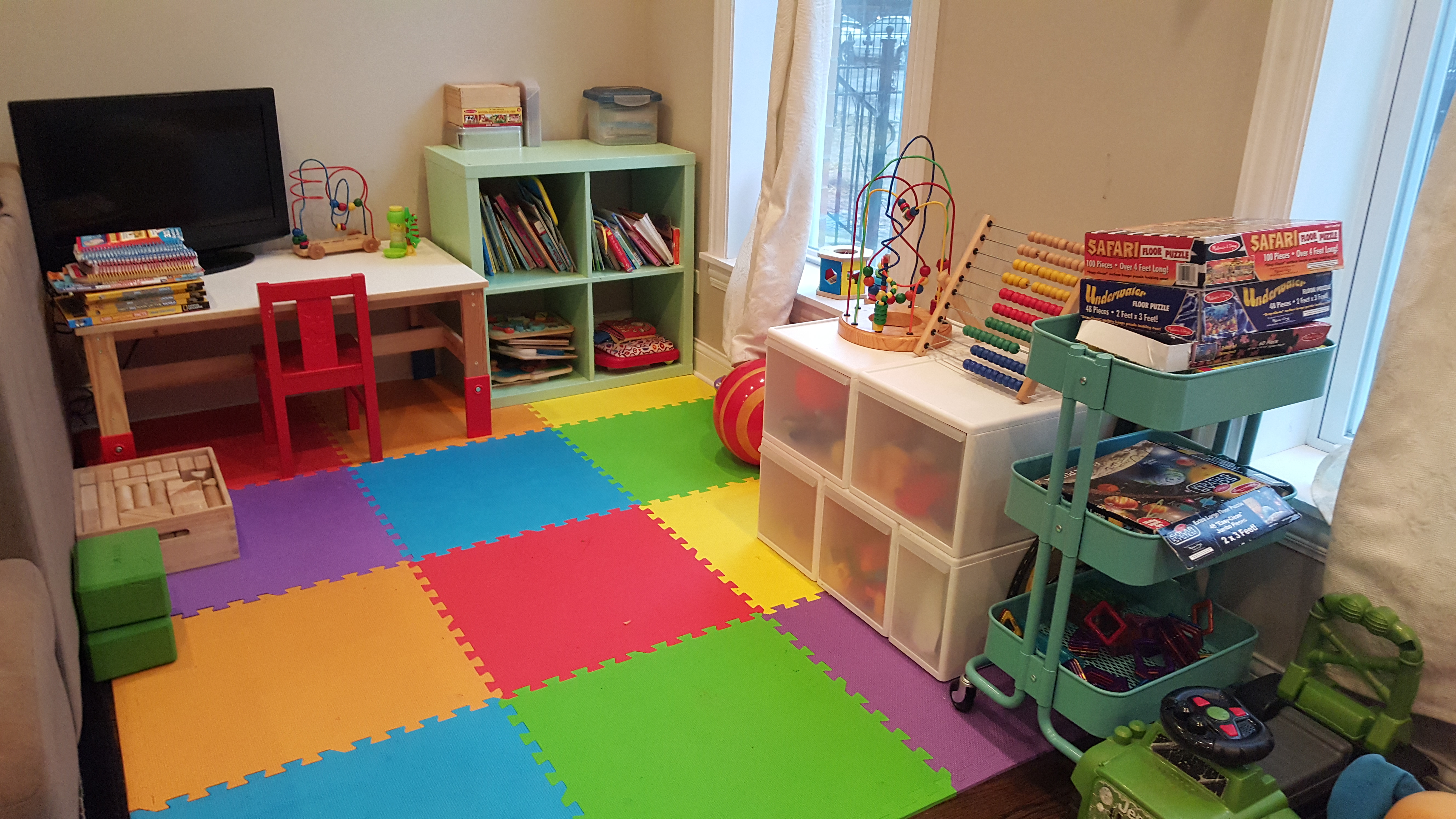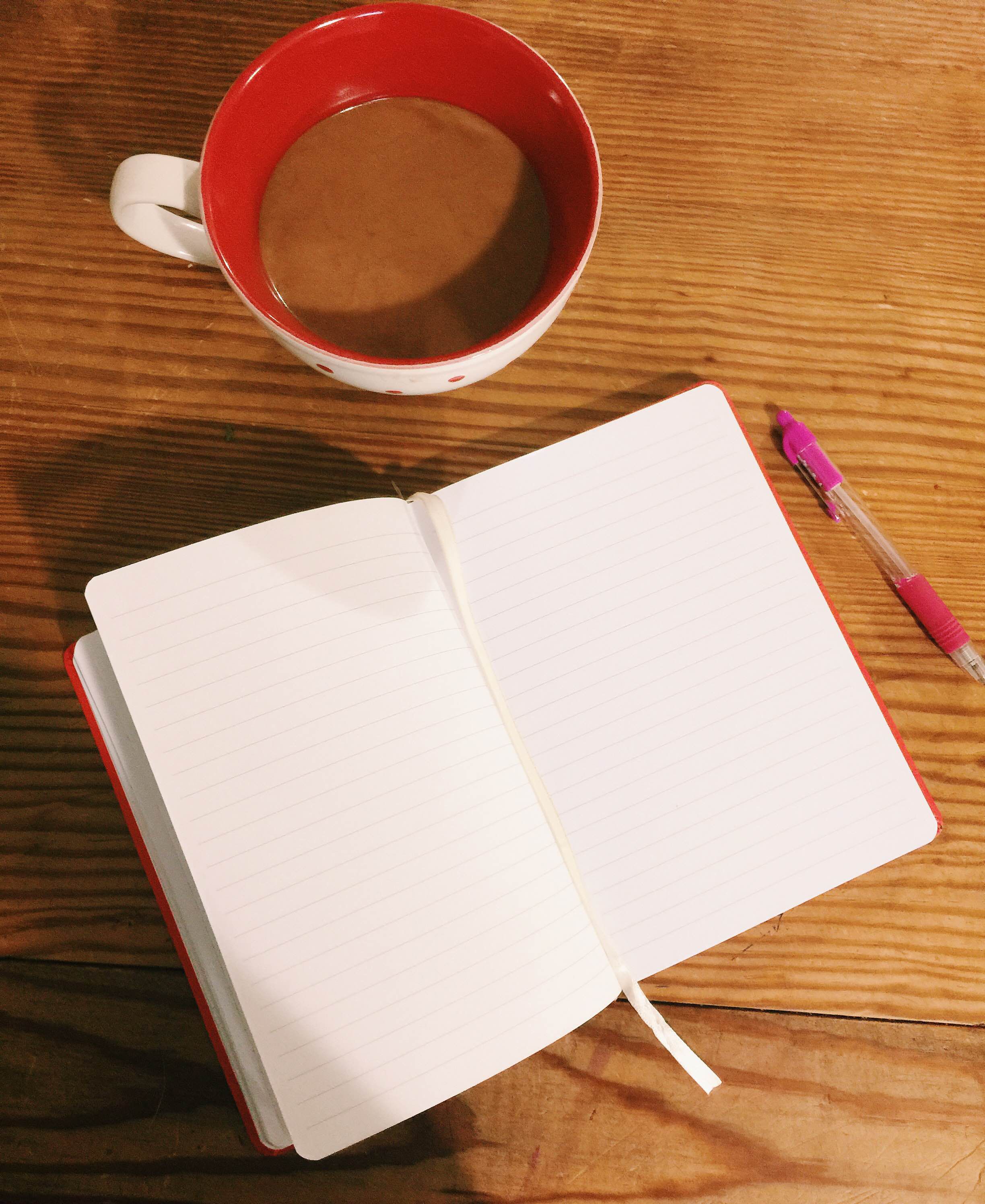I used to be afraid of my possessions. Yes, afraid.
My apartment would get messy, it would be time to clean, and I’d look at the piles of papers, clothes and miscellanea, and my shoulders would tense up. Sometimes I’d tackle the clutter. More often than not, I’d stuff it in a closet and try to ignore it for as long as possible.
Finally, I got fed up. I thought, “I brought these things into my home, so why am I afraid of them? If I created this mess by accumulating these things, I have the power to remove them and reclaim my peace of mind.”
So I started a journey to de-clutter my life, and what I found is that I didn’t clutter because I was out of space, I cluttered because I had a poor sense of what I wanted to keep in my home and what I actually needed to keep in my home.
Years later, I do not miss or regret anything that I’ve gotten rid of, I’ve maximized my space, and one of my most popular articles here on Baby and Blog is a piece I wrote about how I fit a nursery into 60 square feet.
If you want to de-clutter your space but aren’t sure where to begin, here are 11 tips to get you started;
1. Be conscious of all items that cross the threshold into your home
Did a friend give you an bag of her old clothes to try on? Did you accept a terrible house warming present from a well-meaning relative? Were you bombarded with Christmas cards over the holidays? If you do not have a plan or strategy for dealing with these items, they will sit in your home — sometimes for years — without ever being touched, used or dealt with. Be aggressive about what comes into your house. If you don’t want it, eliminate it. There are three ways to do this; throw it out, give it away or sell it. I actually have an ongoing ‘throw out’, ‘give away’ and ‘sell’ pile by my back door. As soon as something enters my home that I don’t want, it goes into one of those piles.
2. Don’t buy unless you are SURE you don’t have it at home
Don’t go into the store with a vague notion of how much sugar or bread or toothpaste you have, or whether you need to buy that new towel set for the guest bathroom. Know exactly what you need and what you don’t. Before each shopping trip, my husband and I take inventory of what we have, so we don’t ‘double buy’. It’s a huge waste of money, space and time.
3. FINISH THINGS before you replace them
You know how you end up with 5 half-empty bottles of shampoo or 3 almost-finished loaves of bread? Because you replace things before they’re totally consumed. The same goes for non-sundry items like clothes, toys and electronics. Don’t replace things because you are bored with them, or just ‘want a new one’. Develop the discipline of using up items before you replace them. At the very least, find someone to give them away to. This is a huge factor in eliminating clutter and waste.
4. Identify your accumulation weaknesses
I used to love cute pens. Any time I saw a cute pen, I had to buy it. Harmless, right? Well, one day I was cleaning and found that, counting pens that I’d bought, been given, or picked up from banks, dentists’ office and the like, I had over 4 dozen pens! I literally did not need to buy another pen in my life. This might not sound like that big a deal, but it is. One person should not have 40 times more of anything than she actually needs. It’s not just a waste of space and money, it’s shameless and senseless consumption. Maybe you have something that you like to accumulate; candles, headbands, cute coffee mugs. If you are buying these things, and not even using them, then you have to examine your habit.
5. Get out of the habit of owning things that you do not USE
Everything in your home must serve a purpose. And if it doesn’t get rid of it. Don’t keep things ‘because you might use it one day.’ If you’ve had it for a year and you have not used it, then you probably never will. Let go of it and give it to someone who will use it.
I must note here that sentimental things; like old photos and baby clothes, do serve a purpose! They remind us of where we come from, and are part of the legacy and history we leave for our children. But if you’re hanging onto something from the past that is not particularly valuable or meaningful to you or your family, just because “it’s old”, you should probably let it go.
6. Make purging a part of your cleaning routine — When you clean your house, purge it
For me, cleaning is more than disinfecting and organizing, it involves purging — whether it’s just going through junk mail or emptying out an old closet. When I clean, my thought process is “How can I make this room a more efficient and comfortable space for my family?”
7. Always, always, ALWAYS sort through your mail. Don’t let it stack up!
There is nothing more anxiety inducing than a stack of unopened mail! For years I was a spotty mail opener, until I womaned up and vowed to read every bit of mail that came to me. I quickly realized that 70% of it was junk and about 30% of it was important. I contacted the companies sending me important mail — banks, insurance companies, etc — and switched as many notifications as I could to email. I also contacted companies that were sending me junk, and removed my name from their mailing lists. Now I don’t feel fear and dread (well, at least not as much ? ) when I open the mailbox, because I know that what I’m receiving is mostly important.
8. Make money by selling purged items to thrift stores and organizing yard sales
I make a regular habit of selling my old clothes to the thrift store. My favorite one for this is Buffalo Exchange and my backup is Plato’s Closet (although my taste is getting a bit too mature for them, lol). I would estimate that, in the 7 years I’ve been selling my clothes, I’ve earned about $1500. Not, bad right? Consignment is also an option if you have quality pieces that you want to get a good price for.
I’m also a huge fan of yard sales. They’re fun and a great way to meet your neighbors and make a little cash! When I was a renter, I organized a yard sale for my apartment building, and I was surprised at how much my landlord and the other tenants got into it ? The day of the yard sale was incredibly fun, and everything I didn’t sell went directly to Salvation Army.
Remember, too, that Salvation Army (and many thrift stores) accept more than clothes. I have donated books, household supplies, bed sheets, and even tupperware. A few years back, I even donated my old car to charity for a tax write off.
When it comes to in-home organization, here are some practical tips to consider;
9. Build storage into your home. A small space with ample storage is much better than a larger space with no storage. If you have a home or apartment without a lot of storage, don’t worry. There are many ways you can create it. Check out this awesome post and this one from Apartmenttherapy.com. Investing in furniture that can double as storage space is also a good idea. A few of my favorites are ottomans that contain storage, beds with drawers and file cabinets that double as side tables;
10. Think vertical. Shelves are your best friend! A cheap, simple and effective way to relieve clutter is to nail a shelf in the wall! You can get as simple or elaborate as you want.
11. Decorate intelligently. There is a fine line between decoration and clutter. Sculptures and trinkets can be beautiful, but they are not functional and can contribute to clutter, plus they tend not to be kid friendly. Opt for framed art and photography or decorations that are functional; lamps, vases for holding fresh flowers, plants that improve air quality.
Ladies, how do you keep your homes clutter free?
Leila Noelliste is the founder and editor of Baby and Blog and Black Girl with Long Hair.
About Leila
Leila is the founding editor of Baby and Blog. She splits her time between editing hair and culture site, Black Girl with Long Hair, whipping up butters at BGLH Marketplace, and writing here. She adores her husband and two kids, her parents and her friends. But she hates Chicago weather although she is slowly coming to peace with it...



















